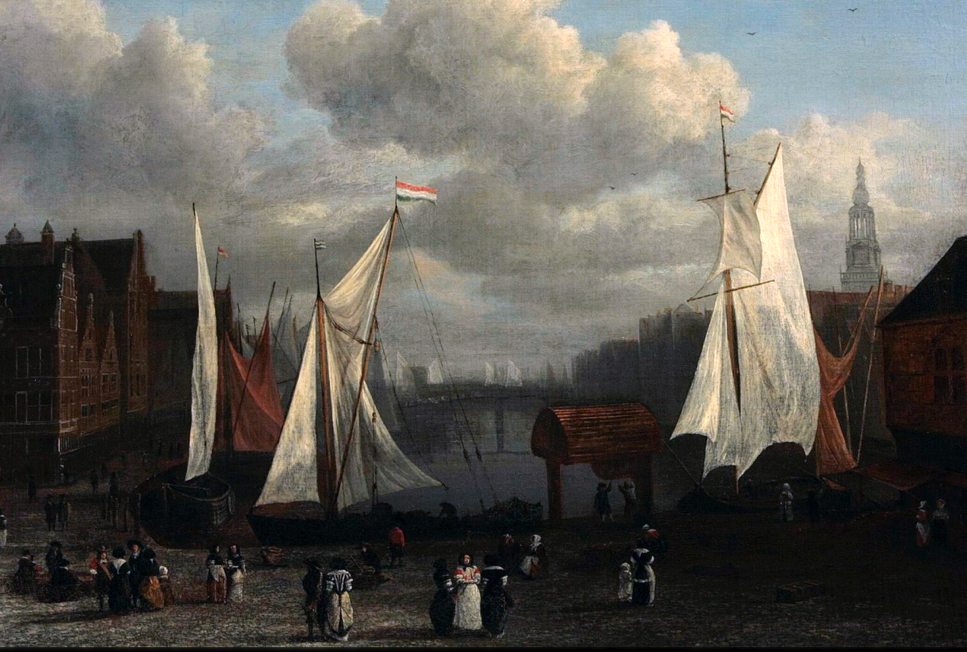
The Trade in Information
The French philosopher René Descartes had a fondness for Amsterdam. As many of the people there, spanning all ages and genders were united in a common preoccupation: the pursuit of wealth. This allowed him, unlike in, for instance, Paris, to live a life that suited him perfectly, remaining anonymous and unrecognizable among the locals, whose attention was largely fixed on their own endeavors.. In 1631, Descartes resided at the foot of the Westerkerk, less than a kilometer from the center of power - the Dam.
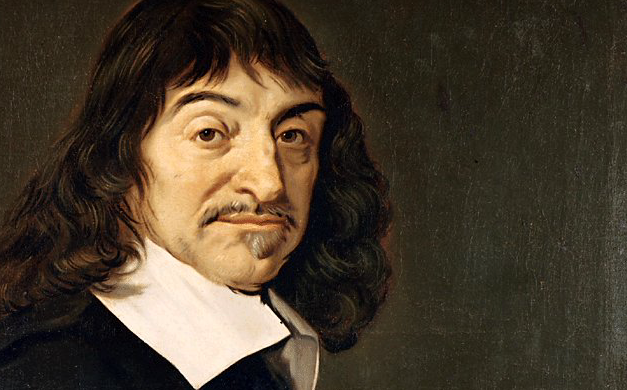
In Amsterdam, it seemed that everything revolved around money. The
city’s layout resembled a spider’s web with the Dam as its epicenter.
There stood the City Hall , which not only housed the municipal
government but also a government-managed exchange bank that functioned
as the national bank. Opposite the city hall was the merchant exchange.
The bank and the exchange dictated life in the city. At the exchange,
not only goods were traded but also shares, such as those of the
renowned Dutch East India Company, the oldest publicly traded company in
the world.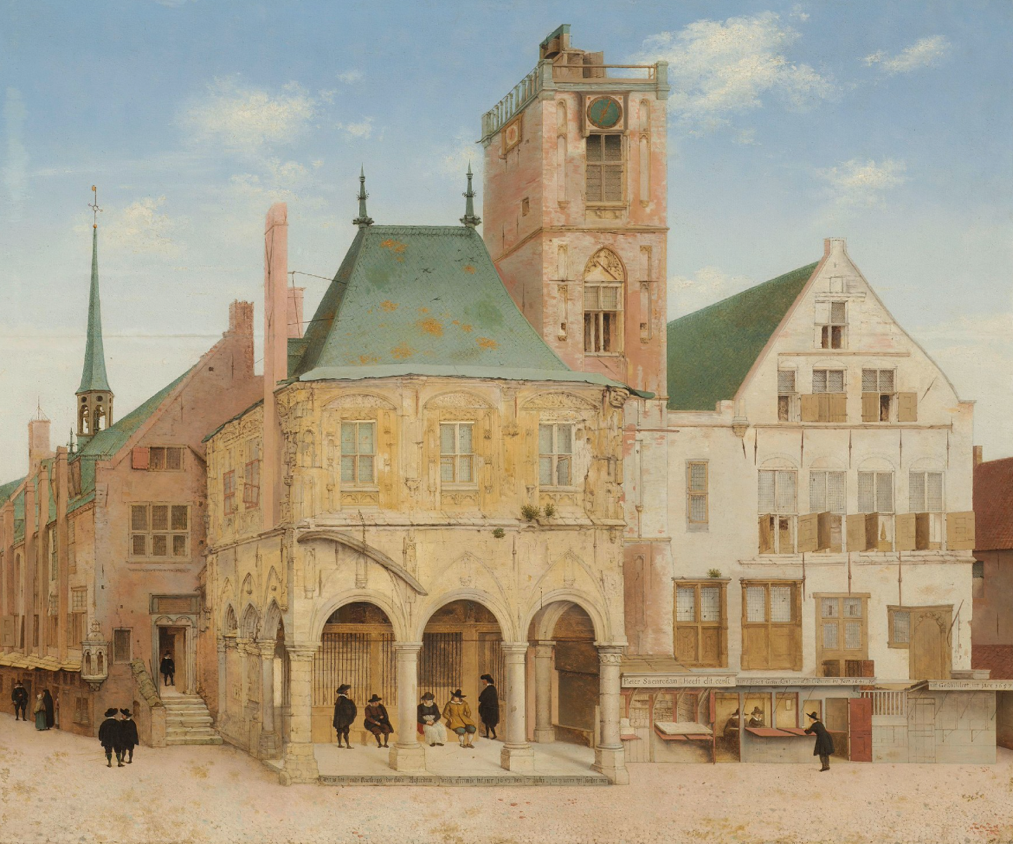
Later in the century, Amsterdam became the site of the first options trading. In seventeenth-century trade, as it does today, knowledge was paramount—knowing something others did not and leveraging that knowledge to one’s advantage. As a result of it , numerous bookstores were established in the houses around Dam Square and in the many side streets, offering daily news, prevailing opinions, and historical and philosophical insights for sale. As Descartes walked from his home to Dam Square, a distance of less than a kilometer, he passed at least fifteen bookstores and publishers. “Bookstore” might not be the most accurate term; what was primarily sold was information in the form of newspapers and pamphlets. Books were for education and entertainment, while ephemeral sources of information were the essence of trade and the sources of income for book vendors.
What was happening in Europe and beyond? What had a particular monarch said or done? Who was ill? What information was available about the return fleet from Java? In the seventeenth century, bookstores served multiple functions, for instance, you could purchase books of all types and sizes, from medieval manuscripts to the latest playsmore importantly, office supplies such as quills, ink, writing paper, and agendas were available, as well as news, of course. Often, there was a printing press at the back of the store or in the attic above, serving a pivotal role similar to today’s major publishing and information dissemination platforms. Various kinds of information and lists were printed: price lists for goods arriving in the harbor, and announcements for funerals that were posted or delivered to homes. Even for laundry, a task that could be outsourced to professionals as it can be today, lists were printed to help customers verify that all their laundry had been returned. When it comes to printed material, the Online Short Title Catalogue of the Netherlands (STCN), a significant portion of books from the seventeenth and eighteenth centuries.. This comprises an enormous quantity of publications, both in terms of number and quality, unmatched by what emerged from presses elsewhere in Europe. However, this represents less than 20% of all printed material produced in Holland, with a significant portion originating from Amsterdam.
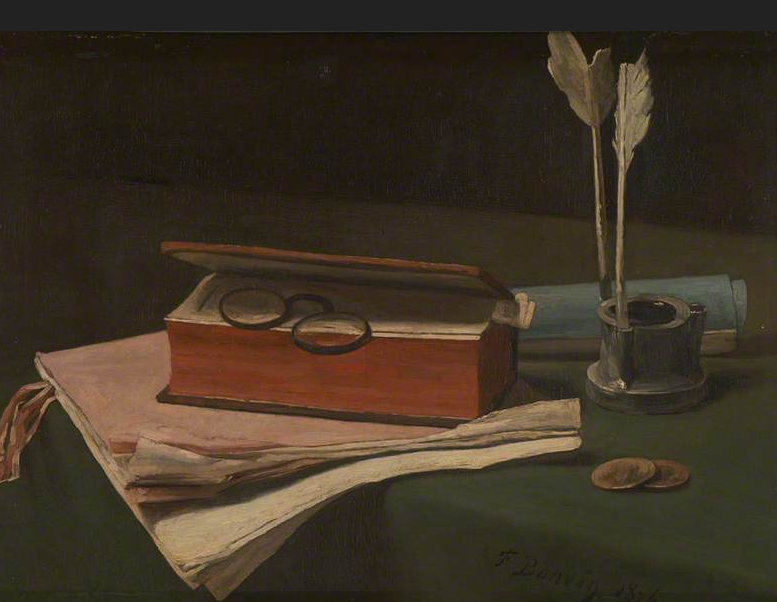
Printers in a Landscape
Before delving into a more detailed examination of the world of printers and publishers, it is essential to contextualize the distinctive political and social landscape in which they operated . The relatively compact territory was formally established as the Republic of the Seven United Provinces, a federation characterized by a conglomerate of semi-autonomous provinces and largely independent cities. The province of Holland was the wealthiest and most affluent and dominant, with Amsterdam emerging as a reluctant leader, often finding itself at odds with the other entities in this loosely united federation.
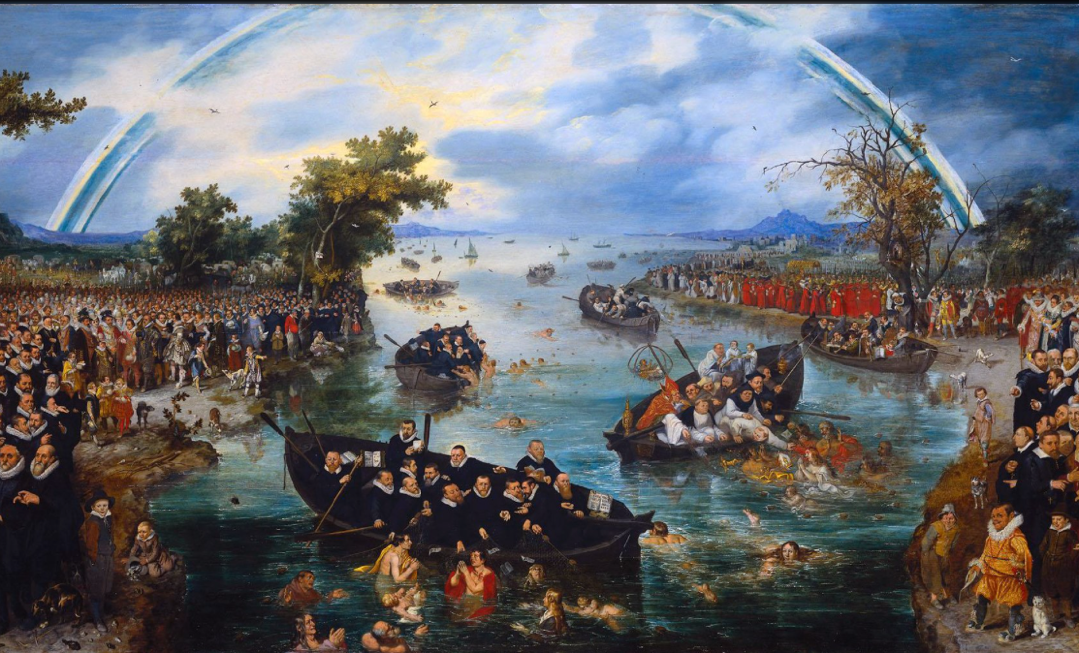
In 1588, the Republic was officially founded when representatives from the seven provinces convened in the Union of Utrecht, publicly rejecting the authority of King Philip II of Spain as their sovereign. The war for independence from the Spanish crown had already raged on for two decades by that point, setting the stage for a grueling conflict that would persist for another 60 years before reaching a resolution through a formal peace treaty ., Despite its ravages, the war ushered in an era of unparalleled prosperity for the Republic. This was not simply an echo of Heraclitus’s idea that “war is the father of all things,” but a direct consequence of the war’s specific demands that facilitated the birth of a unique state model in Europe .
Furthermore, the young Republic boasted a population that was not only youthful but also more diverse than that of any other region in Europe at that time.. Refugees had been migrating to the Republic since the late sixteenth century to build new lives, finding themselves in a unique and foreign land. . Holland lies well below sea level and was protected from the sea by a system of dikes and canals, as well as countless windmills that pumped away excess water. The landscape necessitated cooperation and legal certainty; without these, the country could not survive. Tolerance, therefore, became a fundamental aspect of society, albeit one rooted more in practical considerations than in any moral principle, a stance mirroring the pragmatic approach that earned Dutch merchants their global reputation. Amsterdam, for instance, sold weapons to their Spanish arch-nemesis, from whom they also purchased the essential salt for their flourishing herring industry.
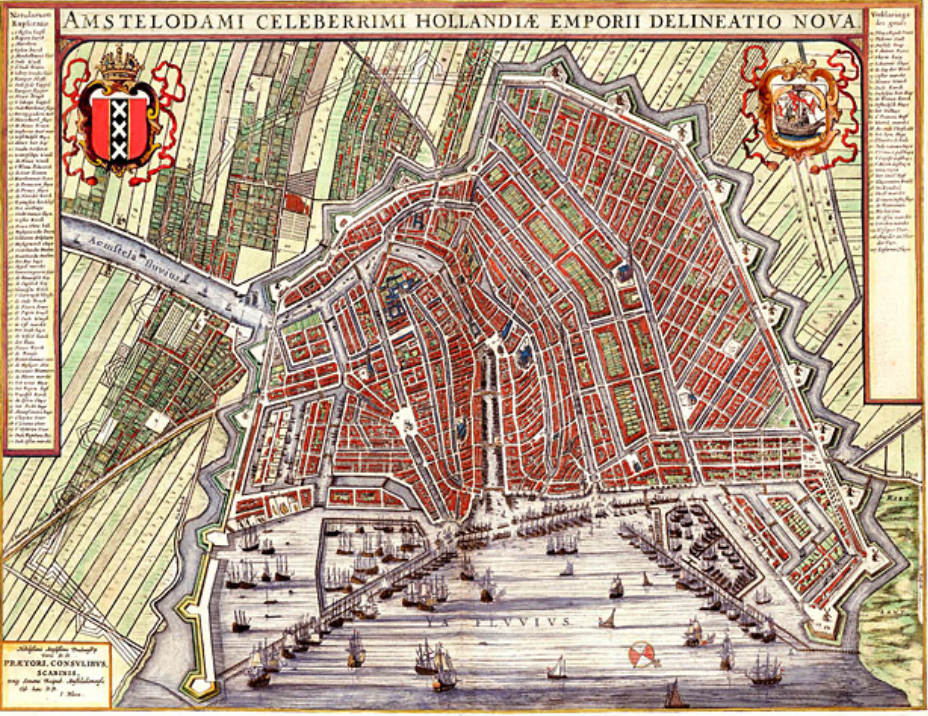
The many depictions of Amsterdam showcase a city distinct from its European contemporaries. Unlike other cities that expanded gradually over time through organic development, Amsterdam was the product of meticulous planning from its inception. Its streets were paved and illuminated by lanterns after dark, and were guarded by a neighborhood watch organized by a district. Residents were responsible for maintaining the cleanliness of the street in front of their dwelling. This cleanliness struck foreigners, as did the numerous women who walked the streets without male escorts or chaperones, engaging in economic activities as actively as men. Women conducted trade and ran businesses, supplying ship articles to the Dutch East India Company (VOC) and office supplies to the city hall. The trade occurred in every building along the major streets. The Nieuwendijk and Kalverstraat, the Damrak, the Dam, and the numerous side streets and alleys were filled with shops offering goods from all the known countries of the world. Amsterdam was a cosmopolitan city.
In Amsterdam, Armenians printed their first books on the Kromboomssloot. A few hundred meters away lived Sephardic Jews who spoke Portuguese and employed servants, many of whom had come from Brazil. There were French, Germans, and Italians, as well as Africans and Arabs. The city was home to diverse communities including French, Germans, Italians, as well as people from African and Arab regions.
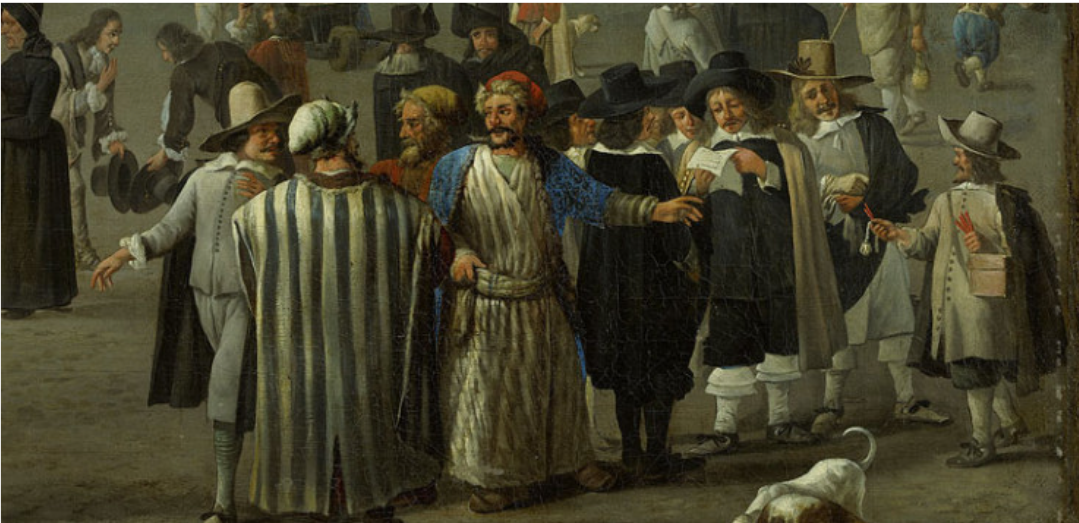
Book Merchants, Publishers, Printers
The wooden printing presses used in the seventeenth century were virtually identical to the printing press invented by Gutenberg nearly two hundred years earlier. This device had a single function: to efficiently and effectively print text on paper. Each day, two printers operating the machine could print around 1,200 sheets of paper on both sides, and each sheet could accommodate between 4 to 24 pages of text. Once printed, the sheets were folded into sections, which were then bound together to form a book. The typesetting used on the press consisted of individual lead letters, which formed the core of Gutenberg’s invention. Texts had to be set letter by letter, using the individual lead letters, before they could be printed.. The workflow is highly streamlined, with a meticulous organization ensuring that tasks from typesetting to printing seamlessly integrated with each other, allowing no time to be wasted. Despite this efficiency, the detailed and labor-intensive nature of the process meant that printing a book could often take several weeks to months to complete. After printing, the books were hand-bound. This final step usually occurred in the shop where the book was purchased, but it was also possible to buy a new book as a set of loose sections and take it to a specialized binder for a more elaborate binding.
In the seventeenth century, publishers and printers often served not just as producers of printed materials, but primarily as booksellers. However, not every bookstore was owned by a publisher or printer, nor were all books sold in bookstores. The purveyors of these printed materials were as diverse as the materials themselves, spanning a broad range from peddlers selling books and pamphlets door-to-door to shops offering secondhand books amidst a wide array of other goods.
Publishers varied immensely, with some focusing on the production of single, thin pamphlets, while others operated on an international scale, commissioning the printing of numerous expensive books for a global market. This diversity met a receptive audience in Amsterdam, where literacy rates were high. Nearly 80% of the population could read and write, actively engaging with the rich textual landscape available to them.
As previously mentioned, entering the publishing field required a relatively low investment, just a few tens of guilders. Anyone could walk into a printing shop with a manuscript and commission the printer. In contrast, establishing a printing house necessitated a substantial financial outlay, starting from a minimum of 600 guilders — an amount equivalent to a minister’s annual salary — and potentially much more considering the spatial requirements.
Printers and compositors were specialists in their field, distinguishing them from unskilled laborers who sought daily work at the harbor. Employees at printing houses often held their positions for many years, necessitating a consistent operation of the presses to maintain the business. The typical printing house harbored two to four presses, employing a team of at least 16 individuals, which allowed for a flexible and profitable operation. A solitary press was not enough; it limited production capacity and flexibility, offering slim profit margins even with a steady stream of orders throughout the year.
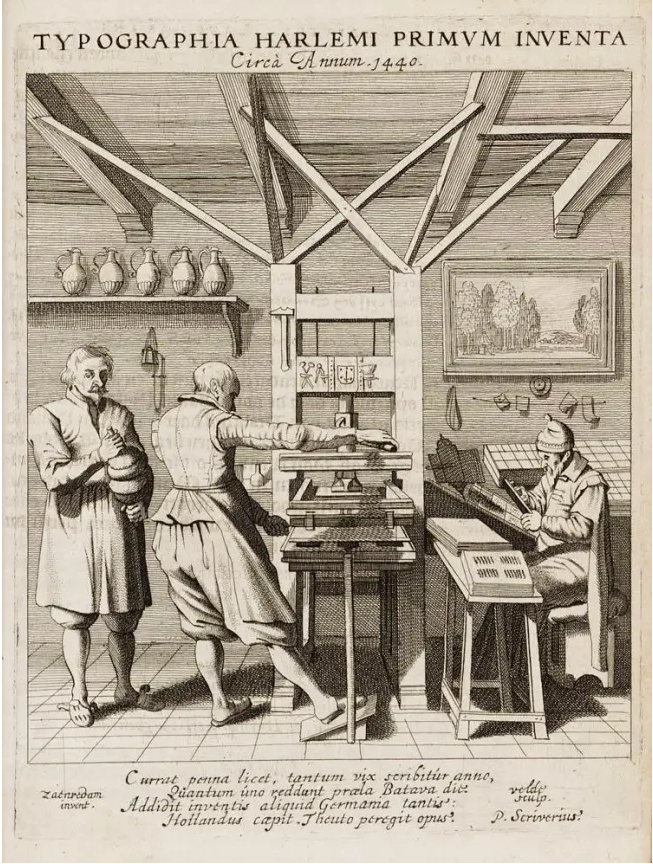
The individuals responsible for crafting books, namely the printers, generally had a less varied profile compared to publishers. While there were printers who utilized their press sporadically, perhaps only a few times a year, this was not the common practice.
There were, no doubt, small establishments scraping by with the owner taking on the printing tasks and their spouse managing the shop’s counter. The contribution of such entities to the economic and cultural landscape was likely marginal, producing inexpensive, transient materials like song sheets, marriage poems, funeral notices, and laundry and price lists.
To sum up, while publishing was accessible to many, the actual printing of these materials remained a profession for the specialists. Success in this field entailed expanding press numbers and maintaining a constant workflow. Although the costs and revenues were relatively fixed per section, this economic rigidity didn’t transfer to the publishing realm. Despite the challenges in delineating a clear typology of the publishers and printers active in Amsterdam, one could posit a sliding scale of operations.
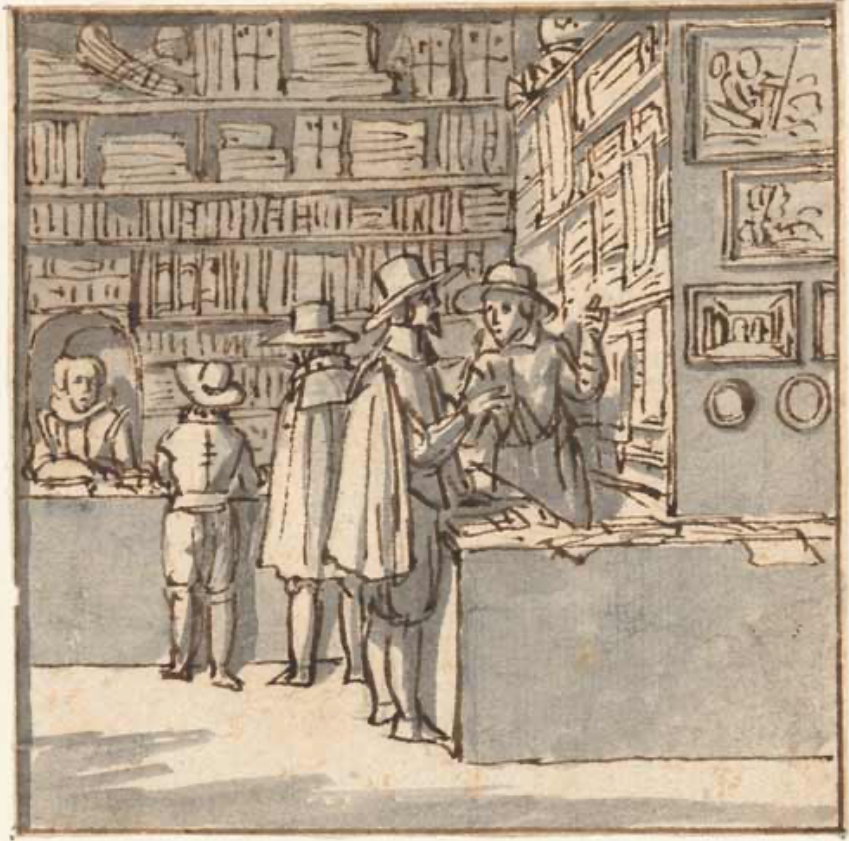
The Major Publisher: Publishing was their core business, sustained by substantial capital that facilitated significant annual investments. These publishers nurtured both national and international networks of colleagues for the distribution of their wide range of publications, whether through trade or direct sales abroad. Typically, they outsourced the printing process, both locally and beyond Amsterdam. The scale of their production was directly proportional to their financial prowess and sales efficacy. Though they might own shops or even printing houses, these were secondary to their publishing ventures. A prime example of such a publisher from early Amsterdam is Cornelis Claesz. While there were usually only a few of these publishers in the city, their numbers and collaborative efforts increased as the century progressed. Many amassed substantial wealth, eventually ascending to the patrician class of the city over several generations. Their publication ventures grew in complexity and risk, echoing their increasingly international and sophisticated trade networks, necessitating collaborative approaches to mitigate risks.
The Medium Publisher: These publishers predominantly served local and specific audiences, like strict Calvinists, Anabaptists, or theater enthusiasts. Central to their operations was a shop where they sold their publications, a space that also cultivated a community for their clientele. Brandt and Wachter were notable publishers of this kind, and by the end of the century, Jan Rieuwertsz owned a popular gathering spot for like-minded individuals.
The Small Publisher: At this level, publishers operated primarily as shopkeepers, occasionally venturing into publishing. Publishing alone was not sufficient to sustain them financially; hence their shops offered a range of products including paper, pens, and other reading and writing accessories. The focus here was more on retail than publishing.
The Occasional Publisher: These individuals often doubled as the authors of the works they published, frequently releasing material under their own names. Their publishing repertoire might include a handful of pamphlets or even a book, generally characterized by limited print runs and a small number of sections. Identifying author-publishers can sometimes pose a challenge. In Amsterdam, it appears that many works published by printer-publisher Paulus Aertsz van Ravesteijn likely involved financial contributions from the authors, a deduction made based on the designs of the publications.
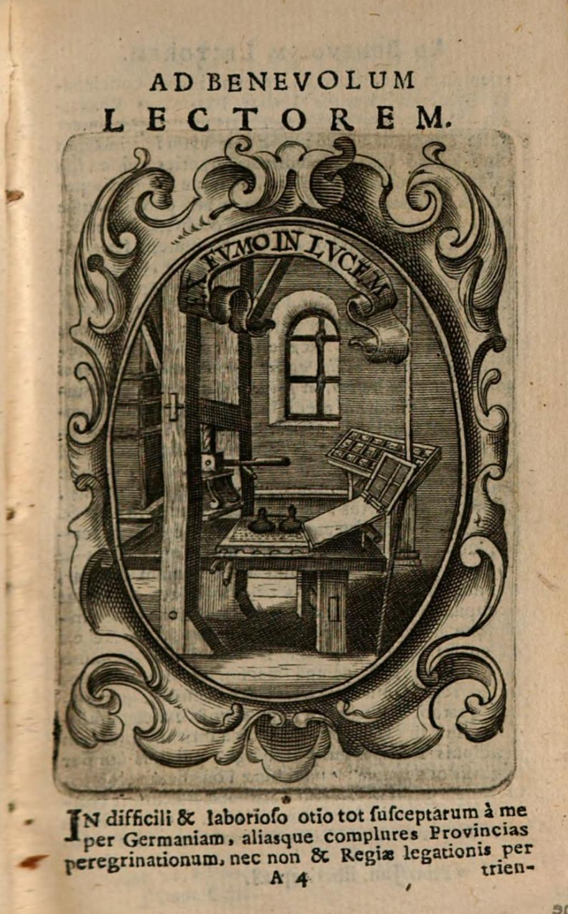
Booksellers: Some booksellers maintained a single press for occasional use, which could be accessed by others as well. The modus operandi and production scale of these booksellers has been outlined above. Notably, a significant portion of publishers operated within this category.
The ‘ordinary’ printer: This type of printer typically owned a shop, but relied heavily on their printing house — equipped with two to four presses — for the majority of their income. Nicolaes Biestkens and, in the latter half of the seventeenth century, Christoffel Cunradus, are examples of individuals who fit this profile. In any given year, there were about ten printers of this kind active in the industry. Determining the output of these printers necessitates a detailed analysis of the entire book production period, particularly focusing on the usage of decorative materials
The Specialist: This kind of printer operated with two types of printing presses, and had the capability to produce copper engravings. They were sought after by publishers aiming to compete in both the national and international markets, offering a guarantee of high-quality printing. While they maintained shops, these were secondary to their primary business of printing. These specialists were few in number and uncovering details about them often requires delving into external sources — whether through incidental mentions in letters or archival documents, or through comprehensive and meticulous investigation of their typographic materials.
The Large Printer: This entity collaborated closely with major publishers and also engaged in international market publishing independently. Typically specialists in niche areas such as geography or illustrated books, they operated shops as a secondary venture while their substantial earnings were derived from their printing and publishing endeavours. The Blaeu family’s printing house stands as a notable example of this category. Circa 1700, they were known not only for publishing monumental works on occasion but predominantly for servicing the prominent Amsterdam publishers.
By the end of the seventeenth century, the book market was largely controlled by a small cadre of major publishers, who often collaborated, especially when publishing expensive books targeted at the European market. Printers increasingly took a backseat, seldom acting as publishers and even less frequently being credited in the books they printed, assuming a more supportive role instead.
As time progressed, publishers flourished financially, whereas printers found themselves in a more dependent position. Books evolved to be thicker and larger; editions from 1720 were, on average, twice as extensive as those from a century earlier, often incorporating illustrations. Such expansive projects necessitated significant investments, which only the well-established publishers could afford, steering the book trade towards a semblance of oligarchy.
During this time, a guild was formed, ironically at a time when the concept of guilds was becoming anachronistic. Contrary to the traditional guild functions of upholding product quality through stringent training and mastery of craft, this guild served primarily to shield the existing interests of employers and facilitate the regulation of relationships between industry insiders and outsiders, essentially functioning as a protectionist entity.
It emerged as a countermeasure to the burgeoning complexities of an increasingly international market, demanding larger investments while navigating the intricacies of a wider market landscape. Moreover, it provided a safety net against the unpredictable dynamics of an open market, fostering a community where members operated on mutual trust and understanding, albeit being relatively closed-off to newcomers unless they adhered to the pre-established norms and regulations.
From 1620 to 1720, book production in Amsterdam experienced a steady increase, a trend not mirrored in the overall Dutch book production. It seems the book trade consolidated predominantly in Amsterdam, and to a smaller degree in Leiden, often at the detriment of other locales. This period in the seventeenth century showcases the emergence of an elite class with exclusive access to information and power, progressively engaging in the international market and amassing greater wealth.
Meanwhile, in the provincial hinterlands, printers and publishers faced escalating impoverishment, largely cut off from the lucrative international market as the local market endured stagnation. The books circulated around 1700 offer a glimpse into the contrasting realities of different societal strata at the time; while the elite retreated to their country estates, surrounded by ornate volumes and living off the wealth accrued by their forebears, the common populace faced economic decline.
The average individual read less, and the material available to them diminished in quality over successive decades, both in content and physical production, eventually falling into obscurity. These humble publications, with their unrefined texts and rudimentary illustrations, paired with subpar printing and paper quality, evoke a complex set of emotions. While their mere existence, defying centuries, is somewhat miraculous, their value primarily lies in their testimony to a bygone era, rather than any intrinsic literary merit.
The Book in the World
Freedom of the press is inherently limited, regardless of the jurisdiction. While the contemporary Netherlands upholds the constitutional right to freedom of the press, it nonetheless imposes restrictions on certain publications. Materials such as child pornography are unequivocally banned, as is the distribution of Adolf Hitler’s Mein Kampf.
Prior to 1800, the Republic lacked any legal framework affirming the freedom of the press, and book prohibitions were a regular occurrence. Specifically, the distribution of publications omitting the author’s name, place of publication, and publisher’s details was forbidden. However, the perception during this time—both domestically and internationally—was that authors in the Republic enjoyed a significant degree of freedom, able to write and publish largely without fear for their safety.
Censorship did exist but tended to be reactive rather than preventative, with the government typically stepping in only following complaints from entities like the church or foreign rulers, or influential individuals. This system of enforcement often appeared somewhat lackluster and indifferent, reminiscent of the nonchalant approach articulated by the slightly bored Inspector Renault in the film Casablanca: “Round up the usual suspects.”
During the Dutch Golden Age, regents largely reacted to press materials with a laissez-faire attitude, akin to their counterparts in other eras. The church vigilantly safeguarded against deviations from the official doctrine, naturally seeking to institute prior censorship, which would be under their control. Personal affairs and reputations were also at stake; Louis XIV frowned upon the mocking of his love life in the Dutch press, while ambassadors and regents occasionally reacted to portrayals they perceived as slanderous or derisive.
The government typically adopted a reactive stance, stepping in mainly in response to third-party complaints, an approach that was perhaps understandable given the circumstances of the time. Public order relied heavily on self-regulation; citizens, donning uniforms, oversaw the maintenance of decorum and safety in their own neighborhoods, focusing more on visible street conduct than activities concealed behind closed doors.
Resources for comprehensive oversight were scant — the Amsterdam schout had a mere ten “rakkers” at their disposal, hardly sufficient to monitor the expansive landscape of at least eighty active printing houses sprawled across the city, not to mention the crowds of sailors seeking leisure and entertainment. Thus, censorship largely fell to private individuals and groups: dedicated members of the Reformed Church scrutinized bookstores, while ambassadors’ agents kept tabs on the offerings at the Binnenhof. The resulting landscape was one where censorship was sporadic, largely driven by individual initiative rather than systematic governmental oversight.
The lax approach of the government during the Golden Age played a pivotal role in establishing Amsterdam as a haven for modern scientific and philosophical discourses that were prohibited in places like Rome or Paris. This liberal attitude fostered an environment where scholars and thinkers enjoyed an unprecedented level of freedom, unparalleled elsewhere in Europe. Where thinkers such as Galileo faced harsh reprisals for their scholarly pursuits, Amsterdam presented a safe harbor for intellectual exploration. People who dared to question the Bible in France or Italy risked death, a fate similarly reserved for those making untoward remarks about potentates.
In the context of the Golden Age, a negligible fraction of books — less than one per mil of the total output — faced bans. Interestingly, these banned works now grace the shelves of libraries across Europe, perhaps suggesting that censorship inadvertently served as the best form of advertisement a publisher could wish for, thereby discouraging the prohibition of books. Adding to the rich tapestry of the publishing landscape was a Dutch hallmark: a plethora of publications appearing under anonymous bylines or pseudonyms, flouting the government’s reiterated directive to mandatorily feature the author’s and publisher’s names on the title pages. This phenomenon of anonymity and use of pseudonyms not only spoke to a spirit of defiant creativity but perhaps also to the practical desire to avoid potential repercussions.
The regulations concerning censorship largely fell on deaf ears. Despite the prohibition, there were years when hundreds of these so-called “forbidden” pieces surfaced, a clear indicator that the society paid little heed to such impositions. Far from being shunned, these pamphlets were avidly collected, promoted, and even bundled for sale. Scarcity added to their value, with rare editions commanding prices much higher than the customary few pennies.
A stark revelation from this scenario is that the efficacy of censorship is invariably dictated by the collective will of the populace; a government’s crackdown on authors and publishers would be futile without the active participation and endorsement of the citizenry. In the Dutch Republic, support for censorship was scant, even during periods when the government endeavored to strengthen its grip.
The underlying reason for this phenomenon can be traced back to the unique cultural fabric of the society. As elucidated in the travel diaries of foreigners who visited the Republic, the Dutch populace exhibited a proclivity for engaging in spirited discussions, demonstrating a remarkable disregard for societal hierarchies and class distinctions. While these discussions were noted to be boisterous — giving rise to the centuries-old term “Dutch loudmouth” — they were as much a form of recreation as they were a channel for serious discourse.
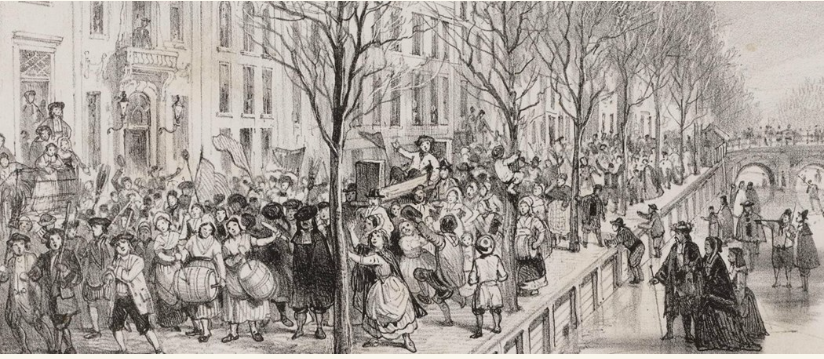
Occasionally, tempers flared, and some windows were smashed or houses were plundered. There were no civil wars, no blood was shed. The ineffectiveness of censorship can be seen in a notorious book: the Bibliotheca Fratrum Polonorum (1664), a monumental work consisting of eight huge folios and many thousands of pages. The printer of the anonymously published work was the prominent Amsterdam printer Daniel Baccamude, who was located at the corner of Nieuwezijds Achterburgwal and Huiszittensteeg, nowadays known as Spuistraat and Raadhuisstraat. When he stood on the doorstep of his house, he could see the city hall, and the mayors, so to speak, lived just around the corner along the canals. It is inconceivable that such an extensive work, where five printing presses were diligently at work for over a year, and which cost as much as ten canal houses, could go unnoticed, all within a hundred meters of the center of power, the new city hall on the Dam square.